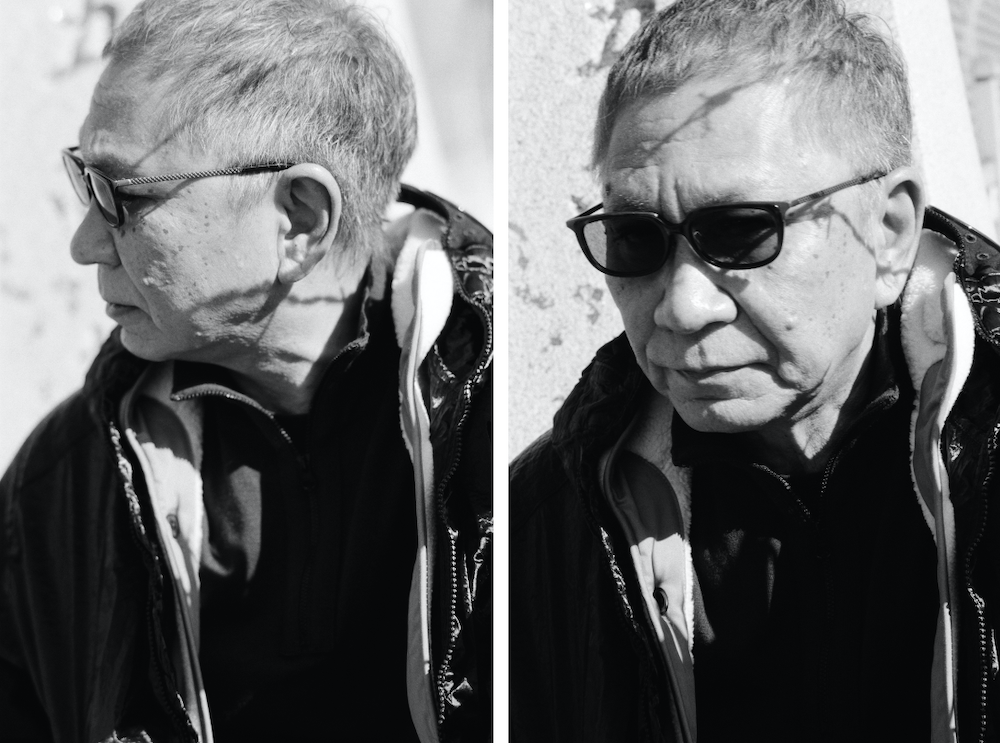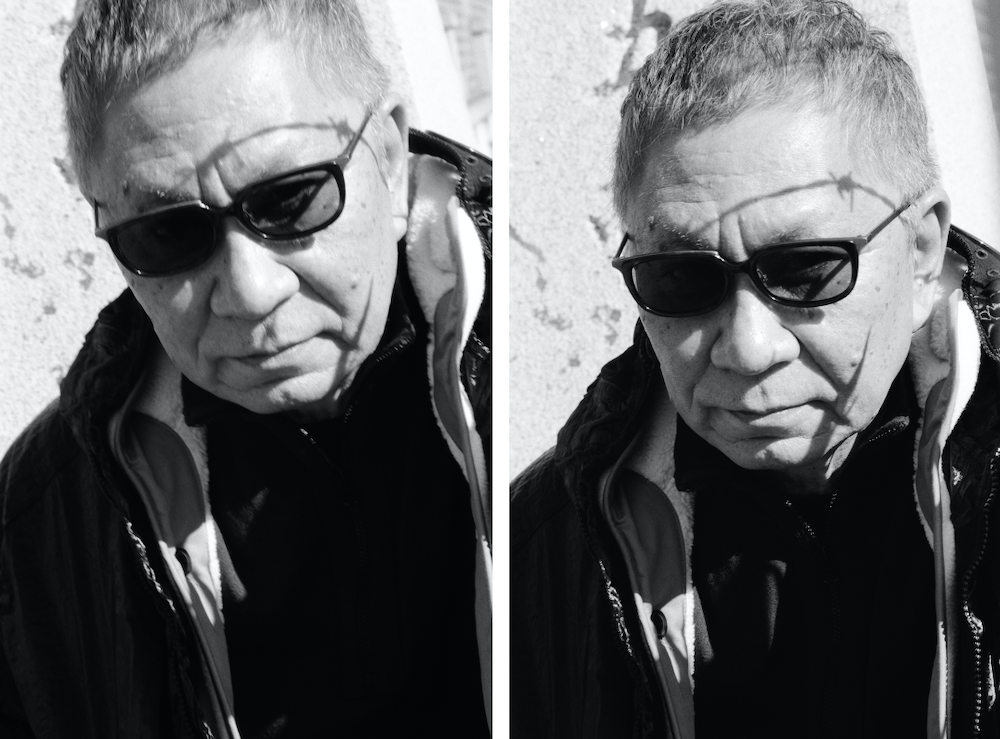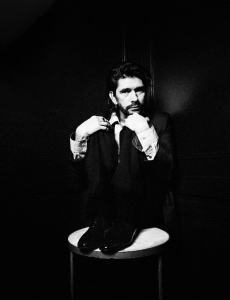The Japanese master of cinema – director of over a hundred films – has a significant international following of genre geeks and cineastes alike. How has he elevated his singular brand of shocksploitation to auteur level? John Harris Dunning digs around the innards of his oeuvre to get to the heart of the matter

Takashi Miike is a study in contradictions. In person, this slim, stylish man is soft-spoken and unfailingly polite – something that can’t be said of his films. Quentin Tarantino calls him “the godfather of ultra-violent, get-under-your-skin movies”. And yet his films Shield of Straw (2013) and Hara-Kiri: Death of a Samurai (2011) were both nominated for the esteemed Palme d’Or at the Cannes Film Festival; while the latter was the first three-dimensional film to be nominated for the prize.
Miike hails from a tough neighbourhood in the bustling port of Osaka. As a youngster he cut school to watch Bruce Lee films and dreamed of a career as a motorcycle racer; he may not have fulfilled that ambition, but his love of speed is evidenced by his prodigious output – over a hundred films to date. “Compared to other directors I may be prolific, but it’s all relative. I didn’t mean to be. Essentially, I’m lazy,” admits Miike. “As a boy, I hated studying, so my grades were poor. When I graduated from high school, I had to choose between going to college or becoming a responsible member of society – in other words, a worker. I thought, I don’t like either, so let’s delay the inevitable. Film school was ideal for lazy people; there were no exams, and whoever applied was accepted. I had no ambition to become a director. Then I watched Vengeance Is Mine (1979), directed by Shōhei Imamura, and felt a shock completely different from watching any other film. I think that was the starting point of my life in movies.”
On graduation Miike found himself drawn into the booming V-Cinema industry. Here he cut his teeth as a director by churning out straight-to-video content across a broad range of genres that aimed to exploit the latest contemporary viewing trends. Fudoh: The New Generation (1996) was his first success, enjoying a wide cinematic release and ending up on Time magazine’s list of top-10 films of the year. A frenetic pace of production and restless genre-swapping have remained important components of his filmmaking. His refusal to be tied down to any one kind of subject matter doesn’t negate his status as an auteur; indeed, there are many elements of Miike’s work that are immediately recognisable. Tight production times are somehow apparent in the quick pace of the action he portrays, a breakneck speed that leaves audiences breathless with adrenaline. His films often lure viewers into a spider’s web of plots that – although meticulously mapped – aren’t always clear on the first watch. But that’s the point: Like Miike’s hapless protagonists, audiences have the sense of being at the centre of vast machinations they can never quite grasp, leaving them in a constant state of jeopardy.

Audition (1999) was the film that won Miike his international following. Commissioned to piggybank on the crossover success of J-Horror smash hit Ringu (1998), Miike made the genre his own with this singular work. The first half of the film lulls us into a false sense of security, then upends it as a suburban romance descends into a savage battle of the sexes. A lovelorn widower is used as a human pincushion before his foot is severed with piano wire; Love Actually this is not. The glee with which Miike approaches this transgressive material chimed with audiences and won their undying loyalty. Miike, however, is bemused by his international success. “I’m grateful of course, but why? That’s what I want to know! Audition’s success was a surprise. Movies are not investments in your future. As the director it would be rude to treat characters as tools for my success – my job is to free the characters onscreen. But as a result, they’ve led me to unexpected places.”
The sheer breadth of Miike’s range is astonishing. Although they include his signature scenes of spectacular violence, with body counts that beggar belief, his big-budget features 13 Assassins (2010) and Blade of the Immortal (2017) also deliver as classic historical epics in the vein of Kurosawa’s Seven Samurai (1954). His film The Happiness of the Katakuris (2001) defies categorisation: A family’s dream of running a rustic inn near Mount Fuji descends into horror as guests keep dying in their rooms, and they have to dispose of the bodies to keep the business going. Oh, and it’s a comedy. And a musical.
Miike is best known for extreme violence. Blood. Gore. Torture. After all, this is a man whose film Ichi the Killer (2001) required no less than 11 cuts by the British Board of Film Classification in order to be awarded an 18 certificate. It was banned outright in many countries. One of Miike’s best loved films, it gave us Tadanobu Asano’s iconic performance as the sadomasochistic yakuza Kakihara. In one scene, a man wakes to find himself suspended from the ceiling from multiple hooks secured in the flesh of his back – and that’s only the start of his troubles. Next Kakihara slowly pushes a meat skewer through his cheek. Just a warm-up. He slowly pierces his victim’s chin, driving the spike up through his tongue and out of his mouth. Surely that’s the end? Of course not. Kakihara slowly pours boiling oil over the writhing man’s back and head as his flesh sizzles and smokes… And there’s more. Much more.

There’s a particularly strong tradition of this kind of heightened, unrealistic violence in Japanese cinema, from the excruciating sexually explicit In the Realm of the Senses (1976), to the cartoony antics of the Lone Wolf and Cub (1972/3) series of films. The Lady Snowblood (1973) film series was an acknowledged inspiration for Tarantino’s Kill Bill series (2003/4), with its almost balletic fight sequences awash in fountains of blood. “Violence in my movies is the result of the character’s personalities,” explains Miike. “I don’t make a movie just because I want to portray violence. I’m simply obedient to the characters I meet in the script.”
The controversy surrounding Ichi the Killer came as no surprise to Miike. In fact, he encouraged it. When the film was presented at the Toronto Film Festival, audiences were provided with sick bags emblazoned with “For Viewing Discomfort”. In this way he follows in the footsteps of classic shocksploitation director William Castle, who activated buzzers under cinema seats during the run of his film The Tingler (1959) to enhance the onscreen action.
Miike’s disregard for the division between high and low culture can also be likened to that of filmmakers like Andy Warhol and John Waters. Warhol’s films were screened in high-profile galleries and sleazy porn theatres concurrently. John Waters has always worked within the shocksploitation genre, famously filming his lead, Divine, eating dog shit in Pink Flamingos (1972), and utilising the ‘odorama’ scratch-and-sniff card for Polyester (1981). Despite these trashy stunts, and arguably partly because of them, these films are acknowledged as important cultural documents. What these filmmakers all have in common is a refusal to bow to accepted cinematic conventions.

Imprint (2006) proved that although Miike may be respected, he was far from being respectable. He was invited to deliver an episode for Masters of Horror, a portmanteau TV project initiated by American broadcaster Showtime, alongside horror film luminaries like John Carpenter and Dario Argento. Used to working to low budgets, he turned in a feature-length episode that Showtime deemed too disturbing to screen – surely the ultimate compliment to the filmmaker. Was it the infanticide? The syphilitic dwarf? The conjoined twins? Surely not…
Miike is part of a long tradition of gross-out limit-experience cinema. Film has always been about spectacle, right from its prehistory when zoetropes presented the illusion of movement, through to the capturing of photographic images on film. Some of the earliest photography and film was pornographic. Sex aside, what could be more spectacular than extreme violence, the ultimate strip tease of opening the body to our curious gaze? Director Ruggero Deodato learned the value of the public’s curiosity about eviscerated bodies when his low-budget flick Cannibal Holocaust (1980) became an international cult hit. This film was spawned by the success of the mondo movie genre. These small-budget films competed with each other to present the public with the most bloodthirsty and taboo footage possible. It’s significant that most of this ‘documentary’ footage was clearly staged. Mondo films walked the line between horror and camp, the bloody restagings closer to opera or Grand Guignol than actual violence.

Contrary to the claims of his censors, Miike doesn’t present sexual and physical violence for the enjoyment of viewers, per se; this is not torture as titillation. These are visceral films that demand a physical response. They test the limits of their audiences, with groans and the covering of eyes common in public screenings – as are walk outs. That’s the point. This is cinema as a feat of endurance as well as enjoyment. This extends beyond violence to any number of taboos: incest, necrophilia, infanticide, drug abuse, and prostitution, to name only a few. They aren’t romanticised in Miike’s films. Rather, he presents them in an unflinching manner, allowing his audiences a rare chance to confront and truly grapple with these transgressive acts head on.
“Back when I was a production assistant, I couldn’t escape from the set for some reason,” notes Miike. “The work was tough, the pay was low, but I felt comfortable being there. I’m not the self-analysing type, but there is one thing I can say – I make a living as a film director because I’m extremely lucky. It’s almost frightening!”
Portraits Daisuke Hamada

This article is taken from Port issue 28. To continue reading, buy the issue or subscribe here




